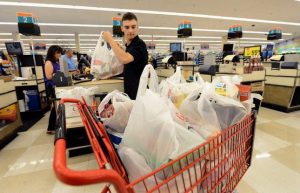Returning to life without coronavirus restrictions is the final phase in a new three-part plan to “reopen Marin,” which the county released this week.
But reaching that final phase could be months or years away, public health officials said.
According to the new plan, announced Monday, such a return to normalcy will require widespread immunity to the virus. That will require that either the majority of the population becomes infected with the disease, or that the majority of the population has access to a vaccine — which experts say could take more than a year to become widely available.
In the meantime, Marin County’s public health officer, Dr. Matt Willis, plans to gradually ease certain restrictions. In doing so, Willis said, he expects to see coronavirus cases spike. So before he begins lifting regulations, the county must complete the new plan’s first phase, which lays out several benchmarks for managing the spread of the illness.
Willis said that while state restrictions will provide a framework for Marin’s coronavirus response, he plans to take a local approach. County health officers, he said, can set local restrictions that are more stringent, but not less, than mandates imposed by the state and federal governments.
“We’re talking about a gradual and sequential process,” Willis said. “At each step of the way, we’re going to be watching very closely to see if there’s any changes in incidence of disease.”
Marin has already met several of the criteria outlined in the plan’s first phase, according to MarinRecovers.com, a county website that tracks the progress of the reopening strategy. New coronavirus cases and hospitalizations, which are among the markers that health officials use to measure the spread of the disease, have decreased, the site says. It also notes that Marin’s hospitals are prepared for a surge in COVID-19 patients, and that the county has established a system of monitoring coronavirus data reported by hospitals, testing laboratories and emergency medical services.
But testing for the coronavirus is lacking in Marin. Passing the plan’s first phase will require that about 500 tests are administered in the county each day — up from about 150 tests, on average, currently.
Contact tracing — which involves public health workers reaching out to each person who tests positive for the virus, identifying their close contacts and asking anyone who might be at risk of infection to isolate — is also behind in Marin. The county has set a goal of contacting and isolating 90% of infected people and their contacts within 24 hours of diagnosis. The workforce required to do so will need to be beefed up as new cases increase, according to Willis.
Reaching the plan’s second phase — the gradual lifting of restrictions — will also require establishing protocols specific to each industry that are aimed at preventing the spread of infection when businesses reopen.
The county announced this week it has begun forming more than a dozen industry advisory groups representing sectors including restaurants, construction, real estate, hotels, schools and the arts. The groups will help develop protocols that will be required within their respective industries, “to ensure that, as we open our economy and get back to business and life, we do so safely,” said Marin County Supervisor Katie Rice, who is overseeing the advisory groups along with Supervisor Dennis Rodoni.
Leaders for each of the 13 groups, most of whom are county officials, were chosen by Assistant County Administrator Angela Nicholson. Those leaders, Nicholson said, will each choose between five and eight group members to meet regularly.
The county has launched an online form that allows people to submit input to the advisory groups, or apply to join them, at bit.ly/3dkgVr1.
The advisory groups “will have a lot of weight” in informing protocols that will be required of businesses, Nicholson said.
“How you’re going to sanitize spaces, how frequently, if you’re going to use plastic cutlery,” Nicholson said, providing examples of practices the groups might discuss. “With all those things, we’ll be looking to the people doing the work to help guide them.”
Willis, however, will have final say on which industries can reopen, and when, officials said.
The gradual lifting of stay-at-home restrictions will begin with the lowest-risk activities, according to the reopening plan’s second phase. Rules will be rolled back at intervals of at least two weeks, giving health officials enough time to monitor surges in coronavirus cases and determine the impact that each lifted restriction has on transmission.
Until the plan’s final phase is reached through widespread coronavirus immunity, rules on mask and social distancing will remain intact while restrictions on businesses and gatherings slowly recede.
“People may feel that we’ve dodged a bullet, or that the mission has been accomplished, but I think that’s far from true,” Willis said. “We’ve prevented the first surge that we would have expected, and we’ve done that with shelter-in-place and all the behavior changes, but we still remain highly vulnerable.”



















